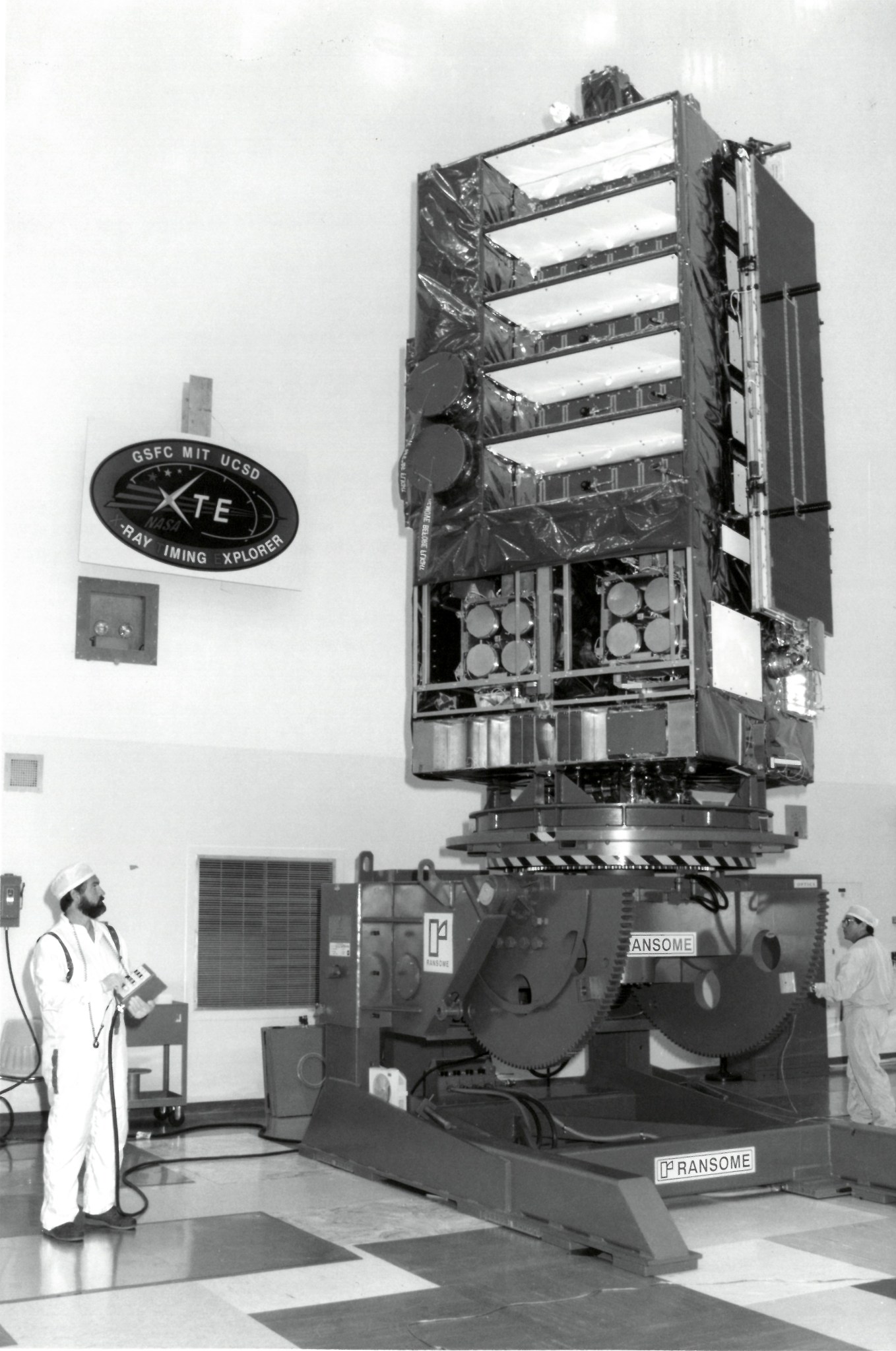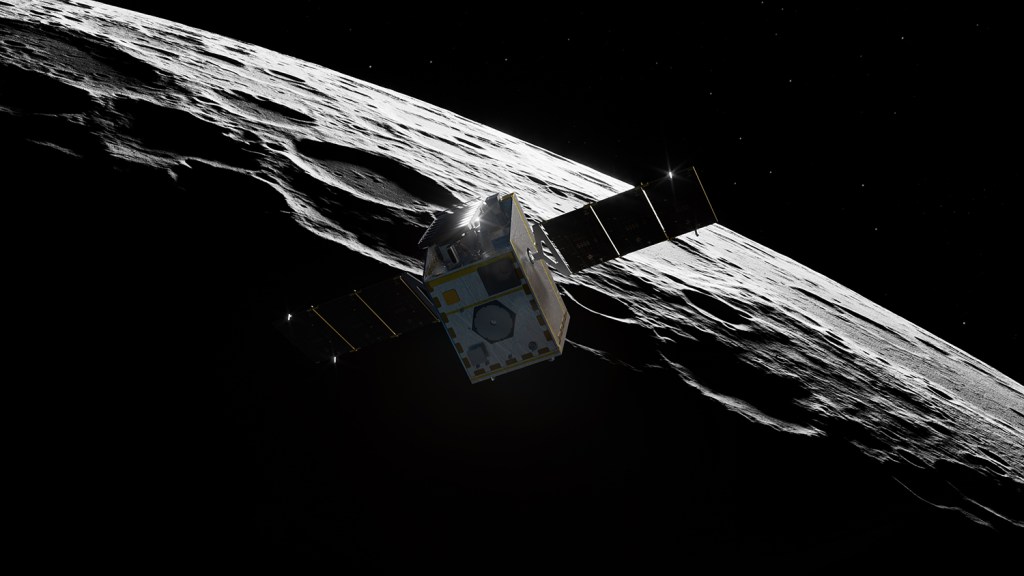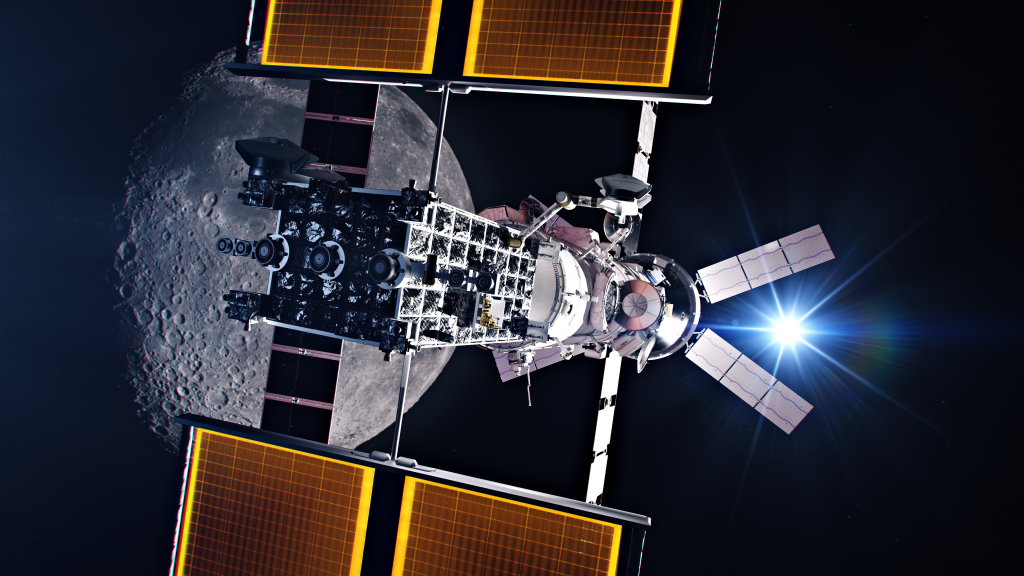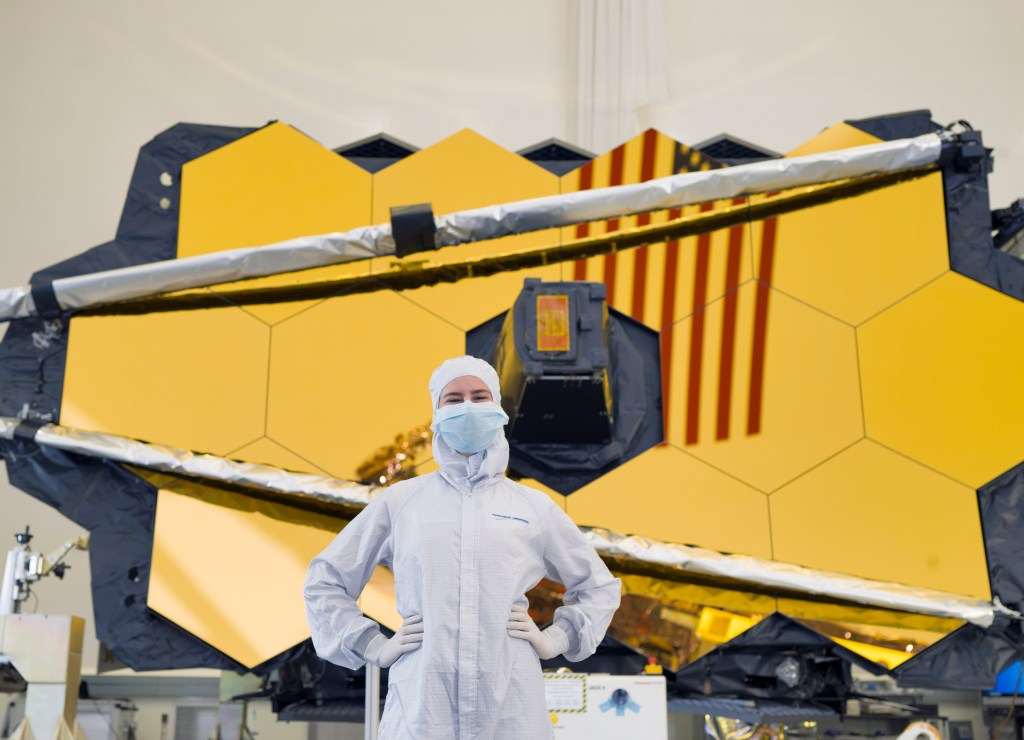
Payload processing technicians in Hangar AO at Cape Canaveral Air Station, Florida, begin checkout and prelaunch tests on NASA’s Rossi X-ray Timing Explorer in summer 1995. The spacecraft rests on a payload support structure after its arrival from NASA’s Goddard Space Flight Center in Greenbelt, Maryland.
Credits: NASA’s Kennedy Space Center
The Rossi X-ray Timing Explorer (RXTE) spacecraft, a NASA mission to observe the time variation of astronomical X-ray sources, is expected to fall to Earth on or about May 1. The mission was terminated and the spacecraft decommissioned on Jan. 12, 2012.
When will the RXTE spacecraft re-enter the atmosphere and burn up?
- The spacecraft is estimated to re-enter the atmosphere and largely burn up in early May 2018. It is not possible to predict in advance the exact time when re-entry will occur.
What risks are there to people and property from falling pieces of RXTE?
- Most of the spacecraft will burn up in the atmosphere during re-entry. Of the spacecraft’s total mass (about 6,700 pounds), 80 percent will never reach Earth. The chance that a piece of the spacecraft will strike a person is approximately 1 in 992. This means that if the re-entry happened 992 times, we could expect that one person would be harmed.
NASA, the U.S. government, and some foreign space agencies limit the risk from re-entering space objects to less than 1 in 10,000; RXTE was launched in 1995, prior to the establishment of this standard practice.
Where will any remains of RXTE likely reach Earth’s surface?
- RXTE circles Earth between the subtropical latitudes of both the Northern and Southern Hemispheres. Due to natural variations in the near-Earth environment, a precise location of where spacecraft debris will re-enter cannot be forecast. The U.S. Space Surveillance Network, operated by the Department of Defense U.S. Strategic Command’s Joint Space Operations Center, will closely monitor the orbit of RXTE debris during its final days and issue periodic predictions of re-entry time and location.
How many NASA satellites, launch vehicles and other large orbital debris re-enter Earth’s atmosphere each year?
- In recent years, the number has been fewer than half a dozen.
How many of these re-entries have resulted in confirmed personal injury or major property damage?
- Since the beginning of the space age in 1957, there has been no confirmed report of an injury resulting from re-entering orbital objects.
Will some of the RXTE spacecraft remain in orbit to contribute to orbital debris?
- No. After the RXTE spacecraft has re-entered, there will not be any components remaining on orbit to contribute to orbital debris.
When was the last time that a NASA science satellite re-entered Earth’s atmosphere?
- The GRACE 1 spacecraft re-entered on March 10, 2018. GRACE 1 was smaller and less massive than RXTE. NASA received no reports of surviving GRACE 1 debris.
Who should be called if someone suspects they found space debris?
- They should call their local authorities. The pieces of RXTE expected to survive re-entry are made of titanium or stainless steel. Although these materials are not toxic, they could have sharp edges and should not be touched or handled by private individuals.
Contact: J.D. Harrington
NASA Office of Communications
NASA Headquarters, Washington, D.C.




























